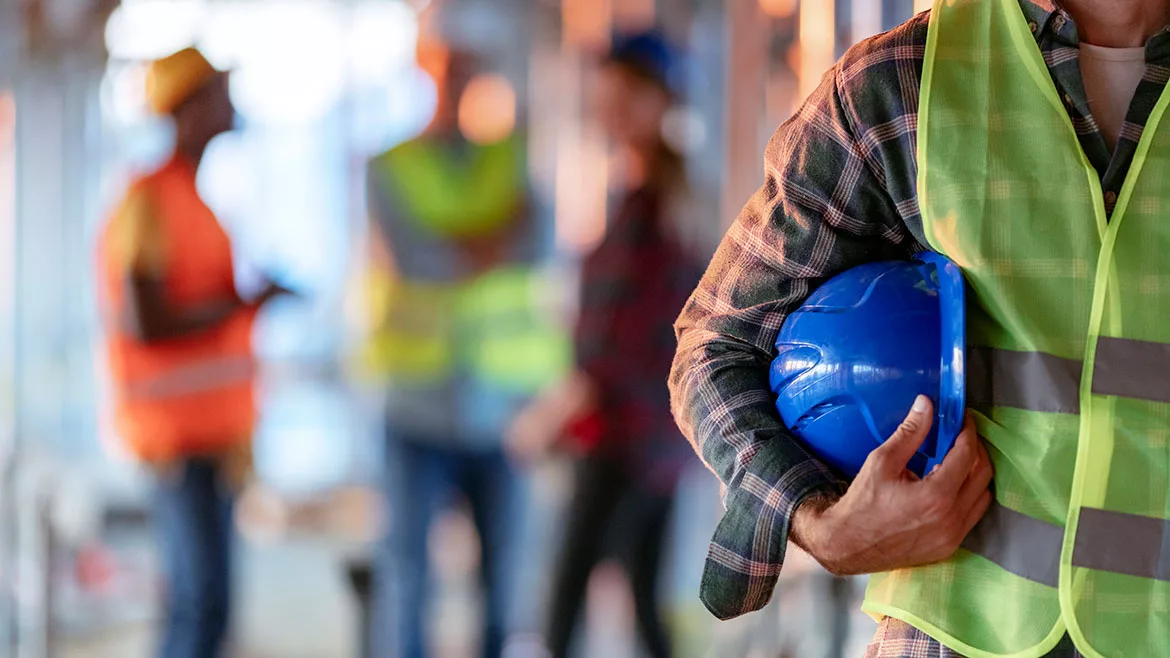Guest Column | Steven John Cumper
Enhancing workplace safety through challenges
Innovative training tools and techniques for plumbing and mechanical businesses.

Image courtesy of ljubaphoto / E+ / Getty Images
Jobs like yours are dangerous. You knew when you started your career that you and your crew would be at risk of injury most days. But you were willing to take the chance anyway because you love what you do.
As a contractor, you also know that without proper safety training, everyone on your team is a sitting duck waiting for a life-changing injury. Luckily, experts are constantly working to strengthen the training programs that keep you safe so that you can put on your work boots with confidence.
Understanding the Importance of Training in Workplace Safety
From personal protective equipment to proper job site precautions, training programs exist to provide the information crews need to keep themselves safe. Safety training is imperative for plumbers and mechanical workers who deal with dangerous equipment, tools, and environmental hazards.
While there are clear personal benefits for every crew member who is versed in safety protocols, it also benefits the company to have everyone up to date. The protection of everyone on the job is the priority, but there are financial incentives, too.
In many cases, worker’s compensation insurance premiums for companies whose employees are current on safety training and follow proper protocols are lower than average. Plus, employers are less likely to be subjected to fines from OSHA if safety is a priority.
Current challenges in safety Training for contractors
As important as safety training is, it comes with its challenges. Some of the more common training-related barriers in the plumbing and mechanical fields include:
- Time: Employees complain that they don’t have the time to complete training programs;
- Interest: Often an issue with more seasoned contractors, capturing and keeping the attention of people who would rather be anywhere else can be difficult; and
- Accessibility: Language barriers and disability restrictions sometimes get in the way of proper safety training.
To overcome these challenges, you’ll need to stay focused and remember that safety training is non-negotiable. Every person on your team needs to know how to do their job safely as well as how to respond in case of an emergency at work.
You can support this by doing your best to make required training engaging and interesting to your crews. Make sure they’re paid for the time spent attending any courses. Invest in the most current, dynamic training programs out there to make sure your team gets the most out of them.
It’s also a great idea to promote safety and emergency preparedness at work, even on non-training days. Outfit your office space or job site with essentials like signage that reminds workers of protocols, well-stocked first aid kits to handle anything that can happen on the site, and access to training manuals for anyone who needs a refresher.
Innovations in Training Tools for Plumbing and Mechanical Safety
These days, technology is king, and access to excellent training tools has never been easier. Most resources can be accessed electronically, and many training courses can be done remotely via webinars or video conferencing.
These kinds of innovations make safety training more accessible, which keeps you and your crews safer. Advanced training tools like electronic CPR dummies can give workers the hands-on experience they need to absorb pertinent information.
Techniques for effective safety training
Experts suggest tailoring safety programs to address the specific hazards that your employees face on the job. To do so, you’ll need your employees’ experience and knowledge to understand every aspect of each crew member’s role.
When you’re in charge, the best thing you can do is put yourself in your team’s boots and approach situations with empathy. That could look like providing individualized training where appropriate to address everyone’s unique learning styles.
When in doubt, real-life examples are a great way to get the gears turning. You can look to the Bureau of Labor Statistics for real figures on workplace safety to motivate your team to take their training seriously.
The most important outcome of safety training is that everyone who attended fully understands the content and how important it is. So don’t be afraid to make it fun, engaging, and memorable.
When in doubt, real-life examples are a great way to get the gears turning. You can look to the Bureau of Labor Statistics for real figures on workplace safety to motivate your team to take their training seriously.
Future trends: Evolving strategies for continued safety excellence
It may feel like you’ve done the same safety training programs over and over throughout your career. But on the horizon, innovations in the way safety concepts are presented will change the landscape of safety training in plumbing and mechanical work.
Artificial intelligence has its place in updating the information presented in training by using the latest data from around the world. Virtual reality systems can place trainees in real-life situations in a controlled environment, giving them a safe space to practice what they’ve learned with low stakes.
Conclusion
In blue-collar industries like yours, safety has to come first for everyone’s protection. It’s critical that you stay informed on the latest updates from OSHA and other sources so that you know you’re providing current information to your team.
Whether you build a training program from scratch for your plumbers and mechanical workers or hire the task out to experts in the field, your commitment to safety will carry over to the rest of your team, and your job sites will be better for it.
Looking for a reprint of this article?
From high-res PDFs to custom plaques, order your copy today!








